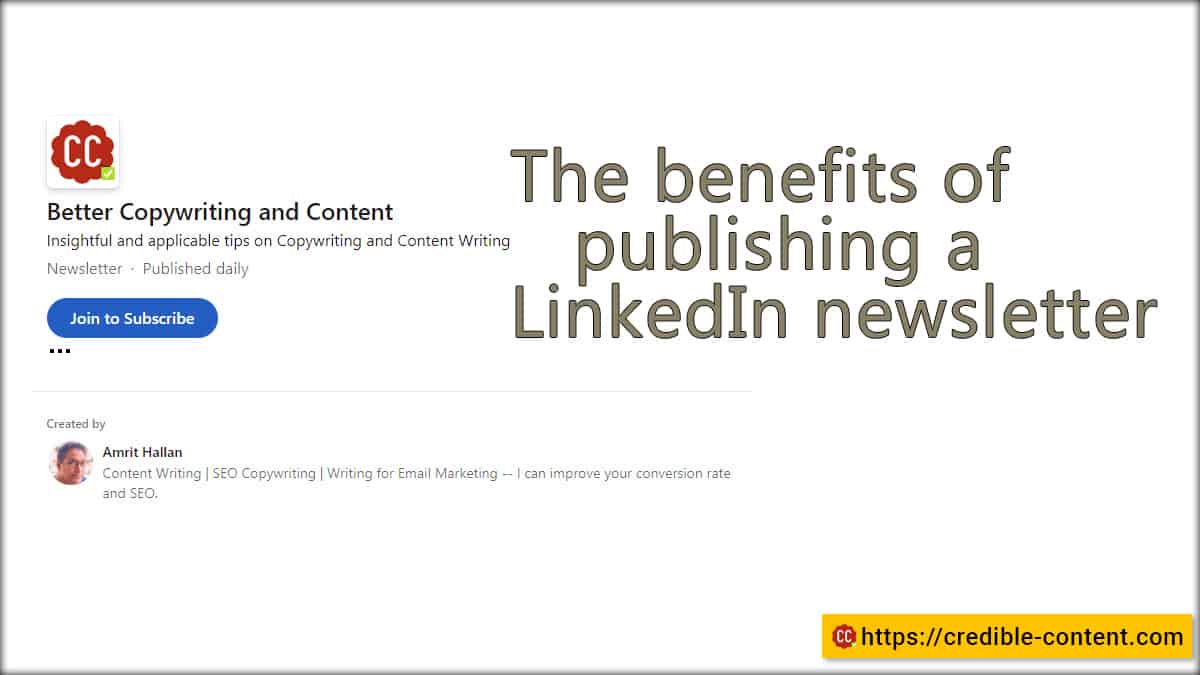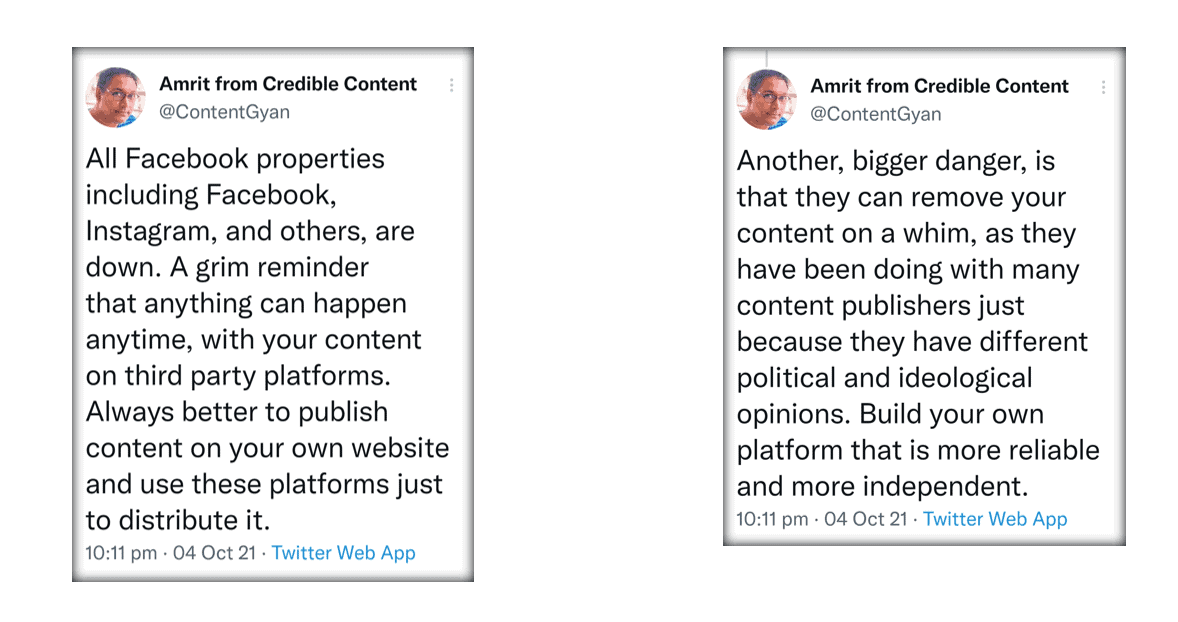LinkedIn these days is allowing you to directly publish a newsletter.
Wondering what is a newsletter?
A newsletter goes by email to all those who have subscribed to it.
LinkedIn has been gradually rolling out its newsletter feature in different regions and different members and now it is available to almost every LinkedIn member.
How do you publish a LinkedIn newsletter?
It is very simple.
You can read about the entire process of creating a LinkedIn newsletter on this LinkedIn link.
What is the difference between a LinkedIn article and LinkedIn newsletter?
These days you can publish content on LinkedIn in three ways:
- The usual update that appears on people’s timelines.
- LinkedIn article that appears on people’s timelines.
- LinkedIn newsletter whose notification is sent via email to all those who have subscribed to it.
The grapevine has it that if you want LinkedIn to promote your content don’t simply publish a blog post on your own website and then publish the link on your LinkedIn timeline.
Instead, republish or re-purpose the blog post on LinkedIn itself as a LinkedIn article.
It is believed that the blog post that you publish on LinkedIn gets more aggressively promoted compared to the usual stuff you post on your timeline.
Also, you can get massive amount of traffic if the editorial staff picks up your blog post and features it in its regular newsletter.
A big difference between publishing a LinkedIn article and a LinkedIn newsletter is that your article is visible to your followers and connections only when they go through the timelines.
If they miss the timeline, they also miss your article.
When you publish the LinkedIn newsletter an email notification goes to your subscribers.
They can access and read your article within the email whenever they check their email.
Main benefits of publishing a LinkedIn newsletter
Listed below are a few benefits of publishing your own LinkedIn newsletter.
Share your professional insights and tips with an eager audience
People who subscribe to your LinkedIn newsletter know what they are getting into.
Here I assume that when you are naming (the title) your newsletter, you are using an appropriate name.
For example, recently when I started my LinkedIn newsletter, I named it “Better Copywriting and Content”
Hence, people who subscribe to my newsletter know that I will be sharing tips and insights on copywriting and content writing.
Why does it matter?
People who choose to subscribe to your newsletter want to hear from you.
They expect to receive updates from you, and they are eager to pay attention to what you have to say about your field.
My field here is copywriting and content writing.
I want to build a mailing list of aspiring content writers and copywriters on LinkedIn with whom I can share my expertise.
Whenever I publish a new blog post I will also republish it through the LinkedIn newsletter.
Over the time this will help rebuild my authority and presence as someone who knows a thing or two about copywriting and content writing.
You can re-purpose your existing content
On my blog I have more than 1200 blog posts.
I am looking forward to republishing some of them in the newsletter.
This will get me additional attention not just for existing blog posts, but also to my written content (in case people read it just in the newsletter and don’t come to my website).
As a content writer you need to build an audience.
Many a times it is not important that every piece of content is accessed from your website or official blog.
The message is more important than the medium sometimes.
This is where your LinkedIn newsletter can help you.
You can spread your message across a wider audience.
More engagement on LinkedIn
Although LinkedIn is a great professional networking platform, just like it happens on any other networking platform, you need to engage people.
Engagement happens when people access and see your content and then react to it.
When scrolling through their timelines in a regular manner they may miss your updates and as a result, you may miss great chances of engagement.
Through the newsletter, they receive your updates at their own convenient time (when they are checking their inboxes).
They may read the contents of your newsletter within the email or click your profile and check out your timeline.
This increases your engagement levels.
Your LinkedIn newsletter boosts your brand awareness
What exactly is brand awareness?
When people, especially your target audience, begin to recognize your brand and associate with it the service or product your brand offers.
I provide content writing services.
The name of my business is Credible Content.
The purpose of publishing my LinkedIn newsletter is to make people aware that I provide quality content writing and copywriting services, and I also share educational materials on the same topics.
Similarly, if you are an architect, brand awareness from your perspective would be that as soon as people receive your LinkedIn newsletter, they know what you are going to talk about and where lies your expertise.
This helps you establish your authority and enhances your brand recognition.
What are the downsides of publishing a LinkedIn newsletter?
The newsletter feature offered by LinkedIn is quite basic. Unlike advanced newsletter management services such as MailChimp, you don’t get detailed analytics.
It doesn’t give you demographic details of the data about the professions of people opening your email.
It gives you the views – how many people view your LinkedIn newsletter.
There is no segmentation – ability to send newsletter content based on the responses the previous campaign elicits.
Another big problem mentioned by many digital marketing experts is that in the LinkedIn newsletter, you don’t have access to the email ids of the recipients.
Personally, I don’t have a problem with that because the LinkedIn newsletter is not for building your mailing list.
It is for broadcasting your content.
The newsletter is just for reaching people’s inboxes through the LinkedIn database.
A thing that I noticed when creating my LinkedIn newsletter is that you don’t have to build your newsletter from scratch.
Within a few hours of creating my LinkedIn newsletter I had more than 100 subscribers – in a conventional newsletter mailing list, depending on how much traffic your website has, it can take anywhere between 1-5 months to get your first 100 subscribers.
You don’t need to use your LinkedIn newsletter as your primary email broadcasting tool.
Just use it as another way to broadcast your content.



